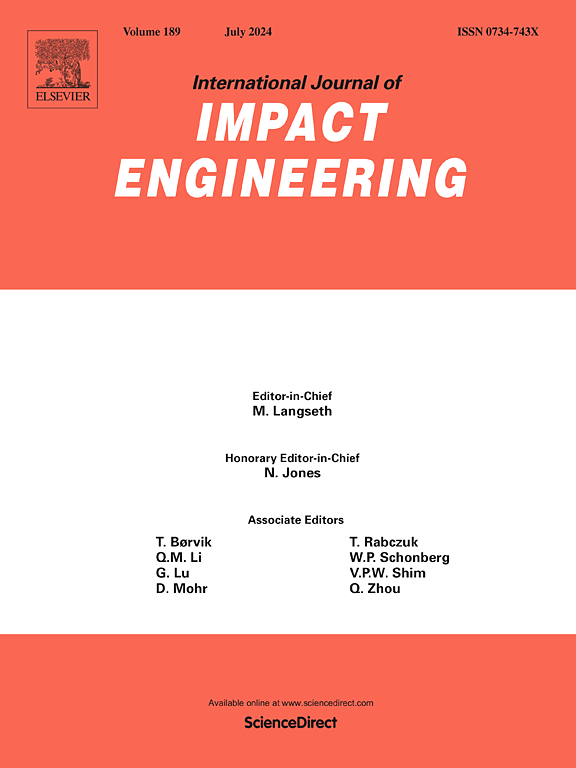The secondary strain growth phenomenon in elastic plane-strain rings
IF 5.1
2区 工程技术
Q1 ENGINEERING, MECHANICAL
International Journal of Impact Engineering
Pub Date : 2024-12-05
DOI:10.1016/j.ijimpeng.2024.105206
引用次数: 0
Abstract
Strain growth is a negative phenomenon in the use of explosion containment vessels. Previous studies mainly focused on the strain growth phenomenon caused by the single bending mode. In this paper, the secondary strain growth phenomenon caused by two bending modes is investigated. To study the strain growth phenomenon attributed to two bending modes, we simplified the explosion containment vessel to a plane-strain ring. The relationship between the thickness-to-radius ratio and preferred bending mode is obtained. The strain growth phenomenon of rings with different thickness-to-radius ratios subjected to the same internal impulse loading is studied through numerical simulations. It is shown that the excitation of two bending modes could lead to the occurrence of secondary strain growth, but it is not a sufficient condition for the secondary strain growth phenomenon. The secondary strain growth exhibits three distinct characteristic phases, namely the breathing vibration phase (Phase I), the regular bending vibration phase (Phase II) and the irregular bending vibration phase (Phase III). Phase I is dominated by the breathing mode response. Phase II is dominated by single bending mode and breathing mode, with only the first strain growth occurring in the ring. Phase III is dominated by two bending modes and breathing mode, and the strain could increase again because of the excitation of the second bending mode, leading to the secondary strain growth phenomenon.
求助全文
约1分钟内获得全文
求助全文
来源期刊

International Journal of Impact Engineering
工程技术-工程:机械
CiteScore
8.70
自引率
13.70%
发文量
241
审稿时长
52 days
期刊介绍:
The International Journal of Impact Engineering, established in 1983 publishes original research findings related to the response of structures, components and materials subjected to impact, blast and high-rate loading. Areas relevant to the journal encompass the following general topics and those associated with them:
-Behaviour and failure of structures and materials under impact and blast loading
-Systems for protection and absorption of impact and blast loading
-Terminal ballistics
-Dynamic behaviour and failure of materials including plasticity and fracture
-Stress waves
-Structural crashworthiness
-High-rate mechanical and forming processes
-Impact, blast and high-rate loading/measurement techniques and their applications
 求助内容:
求助内容: 应助结果提醒方式:
应助结果提醒方式:


